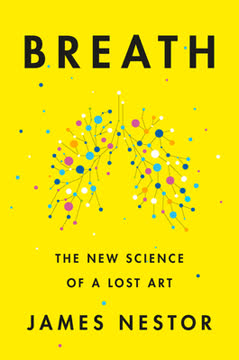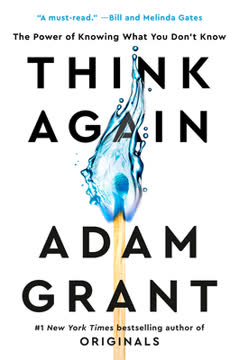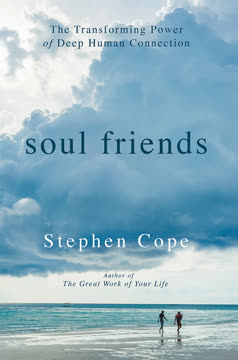Key Takeaways
1. Soul Friends: The Crucible of Self-Transformation
Our relationships with our Soul Friends are the containers, the sparks, and the fuel required for psychological and spiritual development.
Profound impact. Deep human connections, or "Soul Friendships," are not merely pleasant additions to life; they are fundamental to who we become. These relationships act as crucibles, shaping our personalities, fostering growth, and enabling profound transformation. E.M. Forster's life, transformed from a shy boy to a man surrounded by deep connections, exemplifies this journey, driven by his lifelong pursuit of authentic human connection.
Six essential forms. The book identifies six distinct types of Soul Friends, each playing a unique and vital role in our psychological and spiritual evolution. These categories provide a framework for understanding the diverse ways others contribute to our development, from providing basic security to challenging our deepest beliefs. Recognizing these roles allows us to consciously cultivate relationships that nurture our growth.
Beyond conventional friendship. Soul Friends aren't always traditional "friends" in the common sense; they can be family members, mentors, adversaries, or even figures from history or art. What defines them is their profound impact on our inner tectonic plates, moving us towards self-realization. This book invites readers to identify their own Soul Friends and reflect on the precise mechanisms of transformation within these connections.
2. Containers: The Foundation of Safety and Being "Felt"
The active ingredient (scientists would say the “mechanism”) of secure attachment is something in the quality of the mother’s responsiveness to the baby.
Secure base. The earliest and most fundamental Soul Friend is "The Container," typically a primary caregiver who provides a safe, secure, and soothing environment. This relationship, rooted in early attachment theory (Bowlby, Winnicott), allows an individual to feel "felt"—understood and accepted just as they are. The author's grandmother, Armeda, served as this unwavering container, offering reliability, constancy, and attunement.
Psychobiological growth. Within this secure container, the brain and nervous system thrive, engaging in a constant exchange of "energy and information" (Siegel). This co-regulation helps the immature brain organize its processes, fostering a sense of wholeness and the capacity to connect with one's own internal experience. Without this foundational safety, the self can feel fragmented or unreal.
Lifelong need. The need for containment doesn't end in childhood; we continue to seek safe harbors throughout life, especially during times of stress or transition. Institutions like churches or schools can also serve as holding environments, offering protected psychic space. Cultivating awareness of who our containers are, and consciously appreciating their role, strengthens our capacity for self-soothing and resilience.
3. Twinship: Discovering Self Through Essential Likeness
The essence of twinship, Kohut tells us over and over again, is the deep human need to experience the essential likeness of an important other.
Profound reciprocity. "Twinship" describes the thrilling discovery of deep belonging and essential likeness with another person. This intensely reciprocal relationship, often emerging in adolescence, makes us feel truly known and understood, as if we've found "another of our exact species on the planet" (Kohut). The author's friendship with Seth exemplifies this bond, where shared experiences and vulnerabilities forged an unbreakable connection.
Co-creating identity. Twinship is a crucible for identity reorganization, particularly through the mutual telling and retelling of personal stories. This "narrative function" (Siegel) allows individuals to process experiences, integrate new self-perceptions, and construct a coherent autobiographical narrative. The intense conversations and shared adventures with Seth helped the author shed old narratives and forge a new, adult identity.
Vulnerability and growth. While exhilarating, twinship also involves intense contingency and vulnerability. The fear of losing this profound connection can lead to doubt and rivalry, as seen in the dynamic between Finny and Gene in A Separate Peace. However, navigating these challenges, often through explicit "tracking" and "repair" of empathic breaks, deepens the bond and solidifies the emerging self.
4. Noble Adversaries: Forging Resilience Through Opposition
We each have, he says, “a need to experience the selfobject as a benignly opposing force who continues to be supportive and responsive while allowing or even encouraging one to be in active opposition and thus confirming an at least partial autonomy . . .”
Pushing for growth. A "Noble Adversary" is a Soul Friend who challenges, opposes, and frustrates us, but in ways that ultimately strengthen our autonomy and efficacy. This relationship forces us to gather ourselves, push back, and solidify our sense of self. The author's demanding employer, Helen Harrington Compton, served as this unlikely adversary, teaching him perseverance, discipline, and the capacity to tolerate frustration.
Survivability and assertion. A crucial aspect of this dynamic is the adversary's "survivability" (Winnicott)—their ability to withstand our aggression and assertion without collapsing or retaliating. This allows us to safely experiment with our newfound strength and efficacy, preventing the development of a "false self" that suppresses genuine desire. Helen Compton's unwavering presence, despite conflict, fostered the author's ability to assert himself.
Creative tension. Mature adversarial relationships, like that between Charles Darwin and Robert Fitzroy, demonstrate how conflict, when infused with underlying love and good will, can be a powerful engine of creativity and expanded consciousness. Their intellectual and philosophical clashes pushed Darwin to refine his theory of evolution, illustrating how a "third way" can emerge from deep disagreement, fostering flexibility and perspective.
5. Mirrors: Unveiling the Hidden Self and Coherent Narrative
Ourself, behind ourself, concealed – Should startle most –
Seeing the unseen. A "Mirror" is a Soul Friend who possesses an uncanny ability to see us deeply, reflecting back parts of our psyche that remain hidden, unknown, or exiled from our own awareness. This "recognition" can be unsettling, as it exposes our "autobiographical incoherence"—the gaps, idealizations, or delusions in our life story. The author's friend, John Purnell, served as this mirror, challenging his self-perception and revealing hidden truths.
The urge to truth. As Freud discovered, the human psyche has an "urge to truth"; secrets, even those we keep from ourselves, inevitably "gossip with our fingertips" and "betrayal forces itself through every pore." Mirroring relationships, like Freud's with Wilhelm Fliess, provide the safe container necessary to confront these hidden aspects, bringing implicit memories into conscious awareness and integrating them into a more coherent narrative.
Healing through reflection. The process of being mirrored, though often uncomfortable, is essential for psychological maturation. It allows us to reclaim exiled parts of ourselves, understand unconscious motivations, and resolve long-standing conflicts. This journey, akin to Jung's "Night Sea Journey," requires a trusted guide who can bear to see our hidden depths and help us integrate them, leading to a more authentic and unified self.
6. Mystic Friends: Expanding Consciousness Through Resonance
Even at a physical distance, one mind can directly influence the activity—and development—of another through the transfer of energy and information.
Fascination as a guide. A "Mystic Friend" is a like-minded soul, often a writer, artist, or historical figure, with whom we experience profound resonance, even across time and space. This connection begins with intense fascination, which serves as a compass pointing towards an unexpressed part of our own self. The author's deep connection with Annie Dillard, and Thoreau's with William Gilpin, exemplify this phenomenon.
Stages of integration. The relationship with a mystic friend follows a predictable trajectory:
- Fascination: An intense draw to the other's qualities.
- Inspiration: Feeling moved to explore similar paths.
- Identification: Recognizing aspects of oneself in the other.
- Imitation: Trying on the other's ways of being or creating.
- Integration: Incorporating these qualities into one's unique self.
This process expands our consciousness and helps us embody our potential.
Transitional space. Mystic friends create a "transitional space" (Winnicott)—a creative realm where we can play with new identities and possibilities without rigid boundaries. This symbolic container allows us to "marinate" in another's mind, fostering new neural connections and expanding our capacity for subtle perception and self-expression. It's a profound form of "object seeking" where the object is a catalyst for our own inner unfolding.
7. Conscious Partnerships: Cultivating Mutual Growth and Joy
. . . there’s a certain scope in that long love Which constant spirits are the keepers of, And which, though taken to be tame and staid, Is a wild sostenuto of the heart, A passion joined to courtesy and art Which has the quality of something made, Like a good fiddle, like the rose’s scent, Like a rose window or the firmament.
Intentional alliance. A "Conscious Partnership" represents the pinnacle of mature object relationships, where two individuals intentionally commit to supporting each other's happiness and thriving. This alliance, exemplified by the author's co-housing arrangement with Susie and the historical union of Queen Victoria and Prince Albert, is built on shared values, mutual respect, and a deliberate effort to foster collective well-being.
Broaden and build. These partnerships cultivate positive emotions—joy, contentment, interest, and love—which, according to Fredrickson's "broaden-and-build" theory, expand our thought-action repertoires and build enduring personal resources. This creates an "upward spiral" of increasing creativity, resilience, and self-efficacy, transforming transient emotional states into durable character traits.
A made quality. Conscious partnerships are not merely accidental; they possess "the quality of something made" (Wilbur), requiring intentional effort, communication, and a willingness to adapt. They provide a secure base for both individual and mutual growth, allowing partners to navigate life's challenges with greater flexibility and good will, ultimately leading to a profound and sustained sense of happiness and fulfillment.
8. The Self is a Co-Created Masterpiece
The self is, in fact, almost entirely a social and interpersonal creation.
Relational origins. From infancy, our very sense of self is forged in the crucible of relationships. We are not born as fully formed individuals, but rather emerge through dynamic interactions with others. Our brains and nervous systems are "experience dependent," meaning they are literally shaped by the interpersonal connections we form throughout our lives.
Interdependence is inherent. The book consistently highlights that human development is fundamentally contingent on others. Whether it's the infant's reliance on a "good-enough mother" for containment, the adolescent's need for a "twin" to co-create identity, or the adult's growth through "adversaries" and "mirrors," our journey of self-realization is always a collaborative endeavor.
Continuous evolution. The self is not a static entity but a continuously evolving masterpiece, constantly being refined and expanded through new relational experiences. Each Soul Friend, regardless of their specific role, contributes vital "energy and information" that evokes, affirms, and sustains our most mature and authentic self. This ongoing co-creation underscores the profound importance of consciously choosing and nurturing our relationships.
9. Adversity Intelligence: The Art of Creative Challenge
What is extraordinary and eternal does not want to be bent by us.
Beyond IQ and EQ. While raw intelligence (IQ) and emotional intelligence (EQ) are important, "Adversity Intelligence" (AQ) is crucial for thriving and realizing one's full potential. AQ measures how effectively one copes with, responds to, and creatively utilizes life's inevitable challenges, transforming difficulties into opportunities for growth.
Key components of AQ:
- Perseverance: The capacity to return repeatedly to complex problems.
- Flexibility: The ability to adapt thinking and strategies in the face of change.
- Endurance: Sustaining effort through prolonged difficulty.
- Perspective: Maintaining a broad view, avoiding "catastrophizing."
- Self-efficacy: A belief in one's ability to meet challenges.
- Self-soothing: Managing emotional distress effectively.
These traits are often forged in the fires of adversarial relationships.
Growth through struggle. The noble adversary, whether a person or a challenging situation, acts as a goad to expanded consciousness. By pushing against a solid, enduring force, we solidify our sense of self and strengthen our agency. As Rilke suggests, we grow "by being defeated, decisively, by constantly greater beings," learning to harness adversity as fuel for personal and even world-changing achievements, as seen in Darwin's intellectual battles.
10. Healing is a Lifelong Journey of "Earned Secure Attachment"
Many of us spend a lifetime simply trying to recover from the damage of insecure attachment—searching everywhere for repair.
Repairing early wounds. Not everyone experiences ideal early attachment, leading to various forms of emotional suffering like anxious, avoidant, or disorganized attachment (Bowlby). However, the human psyche possesses an enormous capacity for healing and self-repair. Individuals can achieve "earned secure attachment" by finding new "love objects" in adulthood who provide the missing elements of safety, attunement, and consistent responsiveness.
The urge to heal. Despite past deficits, an innate "urge to heal" drives us to seek out reparative relationships. When a suitable "love object of repair" appears, our psychological development reignites precisely where it left off. This process is often facilitated by a "mirroring" friend who helps us confront "autobiographical incoherence" and integrate fragmented aspects of our past.
Transformation at any age. The stories of Eleanor Roosevelt, who overcame a severely deprived childhood through a transformative relationship with her teacher Marie Souvestre, and the author's own journey through complicated grief with John Purnell, demonstrate that profound healing and self-restoration are possible at any stage of life. The world, in essence, is a "vast repair kit," offering endless possibilities for connection and growth.
11. Embrace "Found Objects": Life's Unlikely Catalysts
All are “found objects” in which we “find” parts of ourselves . . .
Unplanned catalysts. "Found objects" are specific people, ideas, or even physical items that, often unexpectedly, become profoundly significant in our development. These objects are "found" rather than sought, chosen by our unconscious radar because they precisely fit our idiosyncratic needs and unlock hidden parts of ourselves. The author's co-housing with Susie, a seemingly unconventional arrangement, became a perfect "found object" for mutual thriving.
Beyond the obvious. The significance of a found object lies not in its conventional appeal, but in its unique resonance with our inner world. Just as a child finds profound meaning in a particular blanket (Winnicott's "transitional object"), adults find catalytic power in unexpected relationships or intellectual pursuits. These connections often defy logical explanation, operating on a deeper, intuitive level of "chemistry."
Unlocking potential. Found objects serve as containers for new growth, allowing us to "marinate" in their influence and integrate new aspects of self. They facilitate a "broaden-and-build" spiral of positive emotions, leading to increased creativity, resilience, and joy. By embracing these unlikely catalysts and consciously engaging with their transformative power, we allow life to guide us towards our fullest potential, often in ways we could never have planned.
Last updated:
Review Summary
Readers highly praise Soul Friends as an insightful exploration of deep human connections. Many found it personally transformative, helping them understand their relationships better. The book's mix of personal stories, historical examples, and research resonated strongly. Readers appreciated Cope's authenticity and the book's potential to inspire more intentional friendships. Some found it deeply moving, while others noted its psychological richness. A few critics found it clinical or difficult to read, but overall, reviewers highly recommend it for anyone interested in self-awareness and human relationships.
Similar Books










Download PDF
Download EPUB
.epub digital book format is ideal for reading ebooks on phones, tablets, and e-readers.






